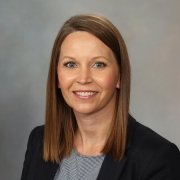Disclosure – What Happens after Medical Errors are Encountered?
MedEdPearls November 2021: Disclosing medical errors involves sharing information, offering an apology, and outlining follow-up actions, with simulation and role modeling key to teaching these skills.
Two decades ago, medical errors were brought into the spotlight with the Institute of Medicine’s report To Err is Human. This report highlighted the alarming rate of medical errors and can be credited to the numerous efforts undertaken to improve the safety of health care delivery. After a medical error occurs, patients expect disclosure of the event. What exactly does the process of disclosure entail? Galagher provides a simple assessment of disclosure that includes three elements:
- Sharing the information about and surrounding the adverse event and resulting error
- Providing emotional support to the patient that includes an apology
- Outlining the follow up actions that will be taken for resolution and prevention
Emphasis of the disclosure process is placed on the apology to the patient and the degree of information shared. Because of the sensitivity surrounding the disclosure process, practicing providers and learners have indicated the need for disclosure training. Literature has indicated the best way for learners within the health professions to build and acquire the necessary disclosure skills is through simulation experiences and role modeling by faculty members.
It is certain that errors will continue to be encountered as the field of medicine evolves and that the resultant disclosure process after these adverse events will be critical. As medical educators, we must assess if there are opportunities to enhance our disclosure curriculum.
Join the #MedEdPearls Twitter discussion to share how our #MedEd network can collaborate to enhance the disclosure research. How do we ensure learners are prepared for the disclosure process?
About the MedEdPearls Author

Carrie Bowler
EdD, MLSCM (ASCP)
- Assistant Professor of Medical Education, Health Care Administration, and Laboratory Medicine and Pathology; Operations Administrator, Mayo Clinic’s School of Continuous Professional Development
- Jean Bailey, PhD – Virginia Commonwealth University School of Medicine
- Carrie Bowler, EdD, MS, MLSCM (ASCP) – Mayo Clinic School of Continuous Professional Development
- Kristina Dzara, PhD, MMSc (Educators ’16; Assessment ’16; HCE 2.0 ’17) – Saint Louis University School of Medicine
- Shanu Gupta, MD, SFHM – University of South Florida Morsani College of Medicine and Tampa General Hospital
- Jennifer Hillyer, PhD – Northeast Ohio Medical University
- Larry Hurtubise, PhD, MA (HCE 2.0 '16) – The Ohio State University
- Anna Lama, EdD, MA – West Virginia University School of Medicine
- Machelle Linsenmeyer, EdD, NAOME (Assessment ’07) – West Virginia School of Osteopathic Medicine
- Skye McKennon, PharmD, BCPS, ACSM-GEI – Washington State University Elson S. Floyd College of Medicine
- Rachel Moquin, EdD, MA – Washington University School of Medicine
- Stacey Pylman, PhD – Michigan State University College of Human Medicine
- Leah Sheridan, PhD – Northeast Ohio Medical University
- Lonika Sood, MBBS, MHPE – Washington State University Elson S. Floyd College of Medicine
- Mark Terrell, EdD – Lake Erie College of Osteopathic Medicine
- Stacey Wahl, PhD – Virginia Commonwealth University School of Medicine
Harvard Macy Institute
Harvard Macy Institute
The Harvard Macy Institute educates, connects, and serves health care leaders around the globe by providing advanced faculty development programs, thought leadership, and impactful networking opportunities.
6 Programs

